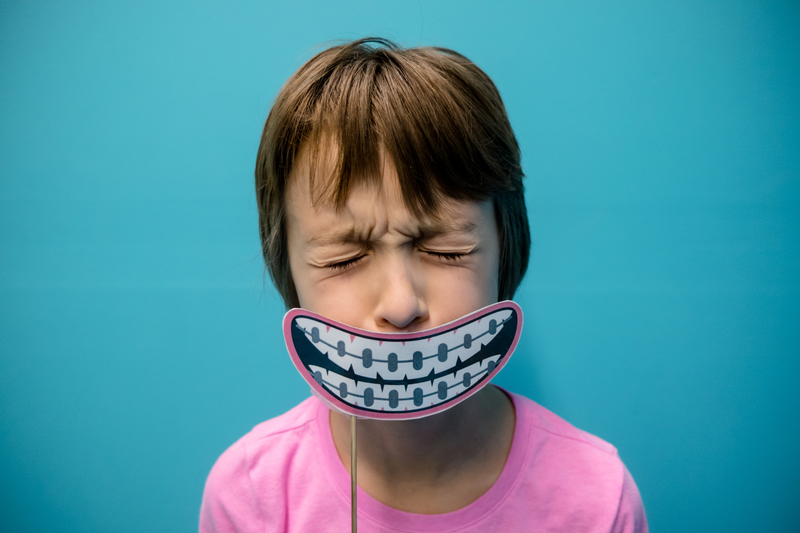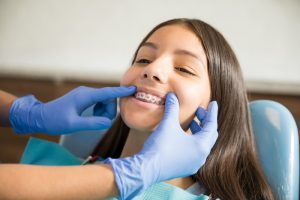Fake Braces Epidemic
How To Make Dental Hygiene Fun For Kids
April 12, 2019What To Do If Your Child Has A Mesiodens Tooth
April 26, 2019
For decades, the wearing of orthodontic braces has been a sign of wealth and prosperity. Although mostly affordable, braces can sometimes be too costly for patients in parts of the world where dental and orthodontic care are not readily available. Because of this, fake braces have become a rapidly growing phenomenon that is affecting the oral health of kids and teens everywhere. Fake braces are not made from the same, solid material that regular braces are made from, and are installed by unlicensed street vendors, salons, or the wearer themself. Find out now about the effects of wearing fake braces and what alternatives there are to straighten your teeth at a more affordable price!
Origins of Fake Braces
Throughout the world, prosperity is seen in different forms and practices among various cultures. For many countries, orthodontic treatment is seen as a form of prosperity as braces typically run at a high cost, thus the wealthier you are, the more likely you are to afford braces. The American Association of Orthodontics recommends that children have their first orthodontic visit between the ages of 7 and 8, but for many poverty-stricken areas of the world, good orthodontic care at an early age is almost impossible to receive unless you have enough money. For vulnerable teens who are wanting to fit in with their peers who can afford orthodontic care, some have even gone to extremes to be more like their friends. Fake braces, although not as commonly heard of in the United States, have exploded in popularity among other nations, especially in the Asian communities. Braces in Asia can cost upwards of $1,200, so teens that can’t afford real braces but still want to look stylish are investing in $100 imitations of braces, but at a risk. In Thailand, the prevalence of fake braces has become so large and concerning that the government has enacted laws that punish sellers, suppliers, and importers with fines and even jail time!
Fake braces are made from a piece of wire with brackets that is glued to the wearer’s teeth. The wire is fit to the exterior of the teeth and then bent around the back molars to secure them in place. Unlike real braces, fake braces are fitted by the wearer, beauty salons, and unauthorized street vendors, adding to the risk of incorrect placement. Brackets on fake braces typically support multicolored rubber bands and use popular pieces shaped like Hello Kitty or Mickey Mouse icons to make them more desirable. Although they might have an aesthetic appeal to many adolescents, the consequences of wearing braces that aren’t installed by a professional can be drastic, and even deadly.
Risks of Wearing Fake Braces
Although the legal repercussions of producing fake braces can be a deterrent, how fake braces can damage your teenager’s teeth and mouth should be even more frightening. Fake braces are dangerous because they aren’t fitted by a dental professional and they can also cause bodily harm if not installed properly and/or if they break while in the mouth. One risk when getting fake braces installed is that they can easily slip into the throat and cause the wearer to choke. These pieces can vary in size and be difficult to remove if lodged in the throat. The metals used in fake braces typically contain lead, which is toxic to the wearer’s body and system. An over abundance of lead in anyone’s system, especially a teenager’s, can have deadly effects on body organs that can’t be corrected once damaged. Lastly, fake braces commonly lead to mouth sores that can become infected and be very painful. The glue used to attach the brackets to the teeth can also cause tooth discoloration and even tooth decay. For all intents and purposes, fake braces cause more damage than they do good, and even if they make teenagers seem “cool” or popular, the consequences that follow aren’t worth it in the end.
Benefits of Early Orthodontics
While orthodontic treatment is important for those kids who need it, fake braces, whether your child’s teeth are straight or not, are not a healthy option for your child. If your child needs braces, then orthodontic treatment should be sought after once evaluated by a dental or orthodontic professional. When certain orthodontic treatments are left untreated, these conditions can become severe and lengthen the overall treatment time needed to correct them. Early detection and treatment of legitimate issues is the first step in helping your child develop good oral health. While fads will come and go, it’s important to teach and show your kids good oral health care routines that will improve the health and look of their teeth without having to turn to unsafe practices, no matter how popular they may be.
If your child or teenager is in need for an orthodontic visit, call Hardy Pediatric Dentistry & Orthodontics at (720) 887-6003! Our experienced team can answer your questions about what orthodontic practices are best to get your child the straight and beautiful smile that they deserve!